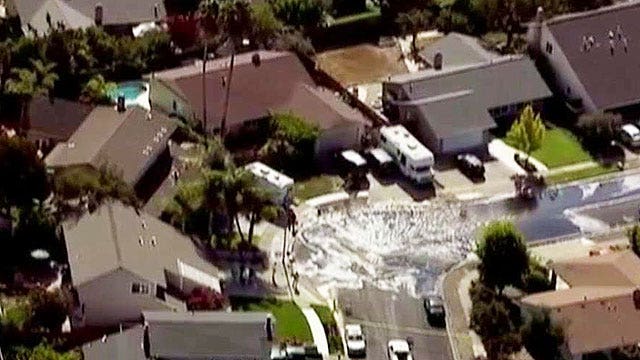Expert: California overdue for much larger earthquake
Insight from Richard Allen, director of the Berkeley Seismological Laboratory
SAN FRANCISCO – In the coming years, Californians could have valuable seconds of warning before earthquakes such as this week's wine country temblor reach them, allowing trains to slow down or stop, power plants and factories to shut off valves, and schoolchildren to dive under desks to avoid falling objects.
Earthquake early warning systems that provide such notice are in place in Mexico and Japan. But California has lagged behind those countries, and is still trying to identify funding sources for the roughly $80 million needed to implement an early-warning system in the state.
Sunday's rolling 6.0 shake near Napa has led to renewed calls for its quick deployment before another, possibly more destructive temblor strikes. Researchers are testing a system that could provide tens of seconds of warning, but it is not available for public use.
"(Mexico and Japan) acted after large tragic earthquakes that claimed thousands of lives," Sen. Alex Padilla, D-Los Angeles, said. "I hope we don't wait for a tragedy of that scale to finally act here in California."
Richard Allen, director of the University of California, Berkeley, Seismological Lab, said his lab received a 10-second advance notice estimating a 5.7-magnitude quake and warning of light shaking before the seismic waves from Sunday's quake arrived there. Allen is among the researchers testing the earthquake warning system envisioned as the basis for the state's system.
Berkeley is about 40 miles from the quake's epicenter and did not experience any damage during the quake, but in a more violent temblor, 10 seconds could have made a big difference, he said.
"A few seconds means that you can move to your safe zone, that you can get under that sturdy table; that way you are not going to be injured by falling fireplaces and ceiling lights. We see a large number of injuries resulting from these kinds of incidents."
The systems can't predict quakes, and are not effective at the epicenter, where the tremors go out almost simultaneously. The warning people receive — a few seconds to tens of seconds — depends on the distance from the epicenter.
Napa, where scores were injured in Sunday's earthquake and much of the damage occurred, would have received at most a second of warning, said Thomas Heaton, a professor of engineering seismology at California Institute of Technology in Pasadena.
Still, Heaton said the system's real value is in serving as a command-and-control center that can relay messages to other automated systems such as trains, slowing them down and avoiding further damage even if the shaking has already begun.
"It's important for people to keep this in perspective," he said. "It's a new kind of tool, but it's not a panacea."
Mexico's system — developed after a 1985 quake that killed thousands — only measures quakes on the country's West Coast and alerts a limited area, Heaton said. Japan's system is countrywide and more similar to what California is pursuing.
During the 2011 Japanese disaster, millions of people received 5 to 40 seconds of warning depending on how far they were from the epicenter. The notices were sent to cellphones and broadcast over airwaves.
In a bill authored by Padilla and signed by the governor last year, California directed the state's Office of Emergency Services to identify sources of funding for an early-warning system and develop it. The money cannot come from state general funds but doesn't specify alternatives.
Mark Ghilarducci, the officer's director, said Sunday that officials are looking at two-year time frame to get the system in place.
"We have been working diligently on implementing an earthquake early warning program throughout the state," he said. "The system does have validity."
Sen. Dianne Feinstein released a statement Monday, calling for "political resolve to deploy such a system."
She continued, "Officials in Washington and along the West Coast should partner with the private sector to make an interoperable earthquake early-warning system a reality, and we should do so as soon as possible before a much larger earthquake strikes."


